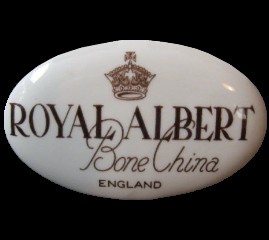Romantic. Exuberant. Beautiful. Feminine. Floral. These are
just some of the descriptions collectors worldwide apply to their favourite
brand of bone china tableware and giftware – Royal Albert.
It’s a brand that’s inspired by the English country garden and
the national flower, the rose. This quintessential English grace, elegance, and
romance accounts for Royal Albert’s timeless popularity in tableware. And the
result? A touch of class for modern lifestyles that effectively fuses indulgent
floral motifs with shabby chic feel. With Royal Albert you have the best of
the classic and contemporary worlds.
The story of Royal Albert stretches back over one hundred years
to a small pottery business established by Thomas Wild in 1896, in Longton - one
of the six towns that make up Stoke-on-Trent, “The Potteries”. This household
name began as a family business. For it was the ability and work of Thomas and
his sons – Fred and Tom (Thomas Clark or TC) – that made the company famous
for bone china tea and breakfast sets.
To own a piece of Royal Albert is to have a piece of history in
your hands. For this household name had links with the royal household from the
start, after Prince Albert who became King George VI in 1936. China produced at
the factory was therefore initially branded as Albert Crown China. 'Royal' was
added in 1904. But it soon became known familiarly as 'Royal Albert'…
Many early shapes were fluted, and included floral motifs and
rich patterns in shades of red, green and blue in the style of popular Japanese
Imari patterns. Above all, Royal Albert's early success was linked to an uncanny
ability to cater for all tastes - from the modest to the most expensive. What’s
more, the first Royal commemoratives were produced as early as 1897 to celebrate
Queen Victoria's Diamond Jubilee. So, Royal Albert has always offered style that
goes beyond the tabletop per se.
A flexible and progressive approach to products and
manufacturing drove UK and, ultimately, international success for Royal Albert.
In around 1910 the first overseas agency was established in New Zealand, and
this was quickly followed by exports to Australia, Canada, and the USA.
Moreover, TC eagerly embraced new technology and incorporated new processes for
continuous improvement - Royal Albert was one of the very first in its field to
install kilns fired by gas and electricity.
Yet it was Royal Albert’s designers who developed its
distinctively English, globally popular, style. It was they who combined the
fineness, whiteness and purity of the bone china ceramic body with sensual and
informal rococo shapes and floral designs. The English fondness for cottage
gardens and shady woods naturally inspired thousands of designs - motifs which
have been adapted and updated through period fashions, such as 1920s vivid Art
Deco floral patterns. It’s proved a winning tableware formula – inspired by
Victorian chintz, Lady Carlyle has proved a popular success for over 50 years.
















